-

Feb
20
Interpretive Summary: A meta-analysis of genome-wide association studies to identify candidate genes associated with feed efficiency traits in pigs
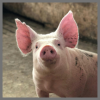
Pig farming is an activity of great relevance for the Brazilian economy and worldwide food security. Feed efficiency, which is defined as the ability of animals to convert feed into performance outputs (e.g., body weight in pigs), is directly related to the long-term sustainability of the pig industry due to its impact on production costs and the environmental footprints of the industry. Therefore, selective breeding for improved feed efficiency has been a primary goal in the pig industry.
Read more
-

Feb
20
Interpretive Summary: Influence of source of origin and region of finishing on growth performance and carcass characteristics of finishing heifers fed in the United States
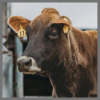
The objective of this research was to evaluate the growth performance and carcass traits of feedlot heifers sourced and finished in different geographical regions in the United States. Overall, heifers transported to higher ambient temperatures had decreased dry matter intake, final body weight (BW), and carcass quality, but had improved carcass cutability compared to non-transported heifers.
Read more
-

Feb
20
Interpretive Summary: Aging oocytes: exploring apoptosis and its impact on embryonic development in common carp (Cyprinus carpio)
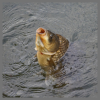
The delay in fertilization after ovulation or retention of ovulated oocytes in the fish body causes postovulatory aging. Postovulatory aging leads to time-dependent deterioration of oocyte quality and loss of fertilization capacity. The mechanisms behind losing oocyte quality and developmental capacity due to postovulatory oocyte aging remain elusive.
Read more
-

Feb
19
The Giving Herd - ASAS Foundation Newsletter - February 2025

The February Edition of The Giving Herd, an ASAS Foundation Newsletter
Read more
-

Feb
14
Kristin Hales ASAS Journey

Kristin Hales ASAS Journey
Read more
-

Feb
13
Interpretive Summary: Alleviation of lipopolysaccharide-induced heart inflammation in poultry treated with carnosic acid via the NF-κB and MAPK pathways
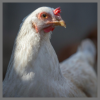
This study explores carnosic acid (CA) from rosemary as a natural feed additive in poultry farming to counter heart inflammation caused by environmental stressors and infections, which often harm growth or lead to sudden death. Researchers tested CA’s protective effects in broilers by treating them with various doses before inducing heart inflammation through lipopolysaccharide.
Read more
-

Feb
13
Interpretive Summary: Mogroside V protects lipopolysaccharides-induced lung inflammation chicken via suppressing inflammation mediated by the Th17 through the gut-lung axis
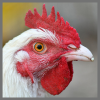
Frequent respiratory problems during broiler breeding not only affect the growth performance of broilers, but also jeopardize the health and safety production of broilers in serious cases. Luo Han Guo is a traditional medicinal and food plant, and its extract mogroside V (MGV) has biological functions such as blood glucose lowering, bacteriostatic, antioxidant, and antiinflammator.
Read more
-

Feb
13
Interpretive Summary: Nutrient use and methane emissions in growing beef fed different protein sources and a pasture-based diet
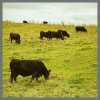
Field beans and soybean meal promote better growth and nutrient utilization compared with brewers’ spent grains when fed as the main protein source for growing beef cattle. Growing beef cattle that were fed a diet consisting solely of Italian ryegrass reduced enteric methane emissions per kg of feed consumed without affecting methane intensity but also reduced their growth rate and efficiency in using dietary energy and nitrogen, compared with beef under diets including more concentrate feeds.
Read more
-

Feb
13
Interpretive Summary: Impact of dietary supplementation of beef cows with rumen-protected methionine during the periconceptional period on prenatal growth and performance to weaning
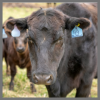
Specific changes in the mother’s uterine environment during pregnancy can have a long-term impact on the progeny. This study examined the effect of supplementing rumen-protected methionine (RP-Met) during the periconceptional period on pre- and postnatal traits of female progeny.
Read more
-

Feb
13
Interpretive Summary: Factors affecting the length of productive life in U.S. Katahdin ewes
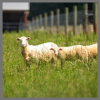
Ewe productive life has a key economic role in sheep production, as longer-lived ewes generally contribute more to lamb outputs over time. In this context, the impact of various factors on the length of Katahdin ewe productive life defined as the time between their first and last lambing was evaluated.
Read more
-

Feb
06
Interpretive Summary: Differences in severity of reticulo-rumen pH drop in primiparous Holstein cows fed the same diet during transition and early lactation: effects on performance, energy balance, blood metabolites, and reproduction

Research on nutritional and metabolic factors that influence the production performance and health of cattle is highly important. This study investigated how different severity of ruminal pH drop influences lactation performance, energy balance, and blood metabolites in primiparous cows when these are fed a similar high-grain diet.
Read more
-

Feb
06
Interpretive Summary: The effect of feeding order of forage and oats on metabolic and digestive responses related to gastric emptying in horses

Horses have evolved as grazing nonruminant herbivores with a relatively small stomach and a highly specialized hindgut capable of fermenting fibrous feeds. However, domestication might have altered the feeds consumed by horses, and today conserved forages and starch-rich concentrates often make up the ration as a substitute or supplement to grazing.
Read more
-

Feb
06
Interpretive Summary: Effect of feeding high oleic soybean oil to finishing pigs on growth performance, carcass characteristics, and meat quality
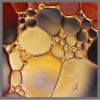
The supplementation of oils in pigs’ diets can affect pork’s fatty acid (FA) composition. It is recommended that humans consume more unsaturated fats due to their health benefits. One strategy to enhance the unsaturated fat profile of pork is feeding dietary fat sources high in unsaturated fats to pigs.
Read more
-

Feb
06
Interpretive Summary: Effect of pre-farrowing hygiene routine (sub-standard vs. optimal) and creep feeding regime (dry pelleted starter diet vs. liquid mixture of milk replacer and starter diet)...
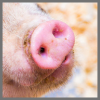
Litter sizes on commercial pig farms have increased in the past number of decades. To support these large litters, creep feeding suckling piglets with a dry pelleted starter diet is commonly practiced on commercial farms, but creep feed intake can be low and variable. Increasing creep feed intake should increase pre-weaning growth and better prepare pigs for weaning.
Read more
-

Feb
06
Interpretive Summary: Identification of transcriptional regulators and signaling pathways mediating postnatal rumen growth and functional maturation in cattle
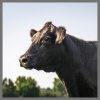
The rumen is the largest digestive organ in adult ruminants, where feed is digested into volatile fatty acids (VFAs) and where most VFAs are absorbed and metabolized. However, ruminants are not born with a large, functional rumen. The rumen undergoes significant growth and functional changes from birth to adulthood.
Read more
-

Feb
06
Interpretive Summary: Effects of a preweaning socialization system on piglet livability, lifetime growth performance, and subsequent sow performance
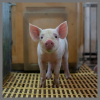
A preweaning socialization system is described as the co-mingling of non-littermate piglets before weaning. This approach allows 2 or more unfamiliar litters to interact and socialize during the lactation period. This system involves the removal of dividers between farrowing stalls and walkways and allows piglets to freely socialize while the sow remains in her stall.
Read more
-

Jan
31
Washington Roundup - January 2025

President Trump Begins Second Term with Numerous Executive Orders:
In the first week of his Administration, President Donald Trump has signed dozens of Executive Orders (EOs) impacting a wide variety of policy areas. A summary of selected actions follows.
Read more
-

Jan
23
Interpretive Summary: Guiding principles of AI: application in animal husbandry and other considerations

Increased efficiency and productivity: AI can significantly enhance decision-making in various aspects of farm management, from feeding to animal health monitoring. Real-time data analysis enables resource optimization, leading to reduced waste and improved efficiency.
Read more
-

Jan
23
Interpretive Summary: Artificial intelligence for livestock: a narrative review of the applications of computer vision systems and large language models for animal farming
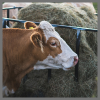
Artificial intelligence (AI) has become essential for decision-making across various industries. The number of research projects involving AI increased by 2.5 times between 2010 and 2018 compared to the previous decade (Lu, 2019). Companies investing in AI have seen significant improvements in sales, employment, and market value (Babina et al., 2024).
Read more
-

Jan
23
Interpretive Summary: Computational approaches for enteric methane mitigation research: from fermi calculations to artificial intelligence paradigms

Governments worldwide have made various commitments to address climate change. The first international treaty related to climate change was the Kyoto Protocol of the United Nations Framework Convention on Climate Change (UNFCCC). This agreement set targets to reduce greenhouse gas (GHG) emissions to 5% below 1990 levels and this commitment was made by 37 countries and the European Union (UNFCCC, 1997).
Read more
 FebInterpretive Summary: A meta-analysis of genome-wide association studies to identify candidate genes associated with feed efficiency traits in pigs
FebInterpretive Summary: A meta-analysis of genome-wide association studies to identify candidate genes associated with feed efficiency traits in pigs Pig farming is an activity of great relevance for the Brazilian economy and worldwide food security. Feed efficiency, which is defined as the ability of animals to convert feed into performance outputs (e.g., body weight in pigs), is directly related to the long-term sustainability of the pig industry due to its impact on production costs and the environmental footprints of the industry. Therefore, selective breeding for improved feed efficiency has been a primary goal in the pig industry.
Pig farming is an activity of great relevance for the Brazilian economy and worldwide food security. Feed efficiency, which is defined as the ability of animals to convert feed into performance outputs (e.g., body weight in pigs), is directly related to the long-term sustainability of the pig industry due to its impact on production costs and the environmental footprints of the industry. Therefore, selective breeding for improved feed efficiency has been a primary goal in the pig industry. FebInterpretive Summary: Influence of source of origin and region of finishing on growth performance and carcass characteristics of finishing heifers fed in the United States
FebInterpretive Summary: Influence of source of origin and region of finishing on growth performance and carcass characteristics of finishing heifers fed in the United States The objective of this research was to evaluate the growth performance and carcass traits of feedlot heifers sourced and finished in different geographical regions in the United States. Overall, heifers transported to higher ambient temperatures had decreased dry matter intake, final body weight (BW), and carcass quality, but had improved carcass cutability compared to non-transported heifers.
The objective of this research was to evaluate the growth performance and carcass traits of feedlot heifers sourced and finished in different geographical regions in the United States. Overall, heifers transported to higher ambient temperatures had decreased dry matter intake, final body weight (BW), and carcass quality, but had improved carcass cutability compared to non-transported heifers. FebInterpretive Summary: Aging oocytes: exploring apoptosis and its impact on embryonic development in common carp (Cyprinus carpio)
FebInterpretive Summary: Aging oocytes: exploring apoptosis and its impact on embryonic development in common carp (Cyprinus carpio) The delay in fertilization after ovulation or retention of ovulated oocytes in the fish body causes postovulatory aging. Postovulatory aging leads to time-dependent deterioration of oocyte quality and loss of fertilization capacity. The mechanisms behind losing oocyte quality and developmental capacity due to postovulatory oocyte aging remain elusive.
The delay in fertilization after ovulation or retention of ovulated oocytes in the fish body causes postovulatory aging. Postovulatory aging leads to time-dependent deterioration of oocyte quality and loss of fertilization capacity. The mechanisms behind losing oocyte quality and developmental capacity due to postovulatory oocyte aging remain elusive. FebThe Giving Herd - ASAS Foundation Newsletter - February 2025
FebThe Giving Herd - ASAS Foundation Newsletter - February 2025 The February Edition of The Giving Herd, an ASAS Foundation Newsletter
The February Edition of The Giving Herd, an ASAS Foundation Newsletter FebKristin Hales ASAS Journey
FebKristin Hales ASAS Journey Kristin Hales ASAS Journey
Kristin Hales ASAS Journey FebInterpretive Summary: Alleviation of lipopolysaccharide-induced heart inflammation in poultry treated with carnosic acid via the NF-κB and MAPK pathways
FebInterpretive Summary: Alleviation of lipopolysaccharide-induced heart inflammation in poultry treated with carnosic acid via the NF-κB and MAPK pathways This study explores carnosic acid (CA) from rosemary as a natural feed additive in poultry farming to counter heart inflammation caused by environmental stressors and infections, which often harm growth or lead to sudden death. Researchers tested CA’s protective effects in broilers by treating them with various doses before inducing heart inflammation through lipopolysaccharide.
This study explores carnosic acid (CA) from rosemary as a natural feed additive in poultry farming to counter heart inflammation caused by environmental stressors and infections, which often harm growth or lead to sudden death. Researchers tested CA’s protective effects in broilers by treating them with various doses before inducing heart inflammation through lipopolysaccharide. FebInterpretive Summary: Mogroside V protects lipopolysaccharides-induced lung inflammation chicken via suppressing inflammation mediated by the Th17 through the gut-lung axis
FebInterpretive Summary: Mogroside V protects lipopolysaccharides-induced lung inflammation chicken via suppressing inflammation mediated by the Th17 through the gut-lung axis Frequent respiratory problems during broiler breeding not only affect the growth performance of broilers, but also jeopardize the health and safety production of broilers in serious cases. Luo Han Guo is a traditional medicinal and food plant, and its extract mogroside V (MGV) has biological functions such as blood glucose lowering, bacteriostatic, antioxidant, and antiinflammator.
Frequent respiratory problems during broiler breeding not only affect the growth performance of broilers, but also jeopardize the health and safety production of broilers in serious cases. Luo Han Guo is a traditional medicinal and food plant, and its extract mogroside V (MGV) has biological functions such as blood glucose lowering, bacteriostatic, antioxidant, and antiinflammator. FebInterpretive Summary: Nutrient use and methane emissions in growing beef fed different protein sources and a pasture-based diet
FebInterpretive Summary: Nutrient use and methane emissions in growing beef fed different protein sources and a pasture-based diet Field beans and soybean meal promote better growth and nutrient utilization compared with brewers’ spent grains when fed as the main protein source for growing beef cattle. Growing beef cattle that were fed a diet consisting solely of Italian ryegrass reduced enteric methane emissions per kg of feed consumed without affecting methane intensity but also reduced their growth rate and efficiency in using dietary energy and nitrogen, compared with beef under diets including more concentrate feeds.
Field beans and soybean meal promote better growth and nutrient utilization compared with brewers’ spent grains when fed as the main protein source for growing beef cattle. Growing beef cattle that were fed a diet consisting solely of Italian ryegrass reduced enteric methane emissions per kg of feed consumed without affecting methane intensity but also reduced their growth rate and efficiency in using dietary energy and nitrogen, compared with beef under diets including more concentrate feeds. FebInterpretive Summary: Impact of dietary supplementation of beef cows with rumen-protected methionine during the periconceptional period on prenatal growth and performance to weaning
FebInterpretive Summary: Impact of dietary supplementation of beef cows with rumen-protected methionine during the periconceptional period on prenatal growth and performance to weaning Specific changes in the mother’s uterine environment during pregnancy can have a long-term impact on the progeny. This study examined the effect of supplementing rumen-protected methionine (RP-Met) during the periconceptional period on pre- and postnatal traits of female progeny.
Specific changes in the mother’s uterine environment during pregnancy can have a long-term impact on the progeny. This study examined the effect of supplementing rumen-protected methionine (RP-Met) during the periconceptional period on pre- and postnatal traits of female progeny. FebInterpretive Summary: Factors affecting the length of productive life in U.S. Katahdin ewes
FebInterpretive Summary: Factors affecting the length of productive life in U.S. Katahdin ewes Ewe productive life has a key economic role in sheep production, as longer-lived ewes generally contribute more to lamb outputs over time. In this context, the impact of various factors on the length of Katahdin ewe productive life defined as the time between their first and last lambing was evaluated.
Ewe productive life has a key economic role in sheep production, as longer-lived ewes generally contribute more to lamb outputs over time. In this context, the impact of various factors on the length of Katahdin ewe productive life defined as the time between their first and last lambing was evaluated. FebInterpretive Summary: Differences in severity of reticulo-rumen pH drop in primiparous Holstein cows fed the same diet during transition and early lactation: effects on performance, energy balance, blood metabolites, and reproduction
FebInterpretive Summary: Differences in severity of reticulo-rumen pH drop in primiparous Holstein cows fed the same diet during transition and early lactation: effects on performance, energy balance, blood metabolites, and reproduction Research on nutritional and metabolic factors that influence the production performance and health of cattle is highly important. This study investigated how different severity of ruminal pH drop influences lactation performance, energy balance, and blood metabolites in primiparous cows when these are fed a similar high-grain diet.
Research on nutritional and metabolic factors that influence the production performance and health of cattle is highly important. This study investigated how different severity of ruminal pH drop influences lactation performance, energy balance, and blood metabolites in primiparous cows when these are fed a similar high-grain diet. FebInterpretive Summary: The effect of feeding order of forage and oats on metabolic and digestive responses related to gastric emptying in horses
FebInterpretive Summary: The effect of feeding order of forage and oats on metabolic and digestive responses related to gastric emptying in horses Horses have evolved as grazing nonruminant herbivores with a relatively small stomach and a highly specialized hindgut capable of fermenting fibrous feeds. However, domestication might have altered the feeds consumed by horses, and today conserved forages and starch-rich concentrates often make up the ration as a substitute or supplement to grazing.
Horses have evolved as grazing nonruminant herbivores with a relatively small stomach and a highly specialized hindgut capable of fermenting fibrous feeds. However, domestication might have altered the feeds consumed by horses, and today conserved forages and starch-rich concentrates often make up the ration as a substitute or supplement to grazing. FebInterpretive Summary: Effect of feeding high oleic soybean oil to finishing pigs on growth performance, carcass characteristics, and meat quality
FebInterpretive Summary: Effect of feeding high oleic soybean oil to finishing pigs on growth performance, carcass characteristics, and meat quality The supplementation of oils in pigs’ diets can affect pork’s fatty acid (FA) composition. It is recommended that humans consume more unsaturated fats due to their health benefits. One strategy to enhance the unsaturated fat profile of pork is feeding dietary fat sources high in unsaturated fats to pigs.
The supplementation of oils in pigs’ diets can affect pork’s fatty acid (FA) composition. It is recommended that humans consume more unsaturated fats due to their health benefits. One strategy to enhance the unsaturated fat profile of pork is feeding dietary fat sources high in unsaturated fats to pigs. FebInterpretive Summary: Effect of pre-farrowing hygiene routine (sub-standard vs. optimal) and creep feeding regime (dry pelleted starter diet vs. liquid mixture of milk replacer and starter diet)...
FebInterpretive Summary: Effect of pre-farrowing hygiene routine (sub-standard vs. optimal) and creep feeding regime (dry pelleted starter diet vs. liquid mixture of milk replacer and starter diet)... Litter sizes on commercial pig farms have increased in the past number of decades. To support these large litters, creep feeding suckling piglets with a dry pelleted starter diet is commonly practiced on commercial farms, but creep feed intake can be low and variable. Increasing creep feed intake should increase pre-weaning growth and better prepare pigs for weaning.
Litter sizes on commercial pig farms have increased in the past number of decades. To support these large litters, creep feeding suckling piglets with a dry pelleted starter diet is commonly practiced on commercial farms, but creep feed intake can be low and variable. Increasing creep feed intake should increase pre-weaning growth and better prepare pigs for weaning. FebInterpretive Summary: Identification of transcriptional regulators and signaling pathways mediating postnatal rumen growth and functional maturation in cattle
FebInterpretive Summary: Identification of transcriptional regulators and signaling pathways mediating postnatal rumen growth and functional maturation in cattle The rumen is the largest digestive organ in adult ruminants, where feed is digested into volatile fatty acids (VFAs) and where most VFAs are absorbed and metabolized. However, ruminants are not born with a large, functional rumen. The rumen undergoes significant growth and functional changes from birth to adulthood.
The rumen is the largest digestive organ in adult ruminants, where feed is digested into volatile fatty acids (VFAs) and where most VFAs are absorbed and metabolized. However, ruminants are not born with a large, functional rumen. The rumen undergoes significant growth and functional changes from birth to adulthood. FebInterpretive Summary: Effects of a preweaning socialization system on piglet livability, lifetime growth performance, and subsequent sow performance
FebInterpretive Summary: Effects of a preweaning socialization system on piglet livability, lifetime growth performance, and subsequent sow performance A preweaning socialization system is described as the co-mingling of non-littermate piglets before weaning. This approach allows 2 or more unfamiliar litters to interact and socialize during the lactation period. This system involves the removal of dividers between farrowing stalls and walkways and allows piglets to freely socialize while the sow remains in her stall.
A preweaning socialization system is described as the co-mingling of non-littermate piglets before weaning. This approach allows 2 or more unfamiliar litters to interact and socialize during the lactation period. This system involves the removal of dividers between farrowing stalls and walkways and allows piglets to freely socialize while the sow remains in her stall. JanWashington Roundup - January 2025
JanWashington Roundup - January 2025 President Trump Begins Second Term with Numerous Executive Orders:
President Trump Begins Second Term with Numerous Executive Orders: JanInterpretive Summary: Guiding principles of AI: application in animal husbandry and other considerations
JanInterpretive Summary: Guiding principles of AI: application in animal husbandry and other considerations Increased efficiency and productivity: AI can significantly enhance decision-making in various aspects of farm management, from feeding to animal health monitoring. Real-time data analysis enables resource optimization, leading to reduced waste and improved efficiency.
Increased efficiency and productivity: AI can significantly enhance decision-making in various aspects of farm management, from feeding to animal health monitoring. Real-time data analysis enables resource optimization, leading to reduced waste and improved efficiency. JanInterpretive Summary: Artificial intelligence for livestock: a narrative review of the applications of computer vision systems and large language models for animal farming
JanInterpretive Summary: Artificial intelligence for livestock: a narrative review of the applications of computer vision systems and large language models for animal farming Artificial intelligence (AI) has become essential for decision-making across various industries. The number of research projects involving AI increased by 2.5 times between 2010 and 2018 compared to the previous decade (Lu, 2019). Companies investing in AI have seen significant improvements in sales, employment, and market value (Babina et al., 2024).
Artificial intelligence (AI) has become essential for decision-making across various industries. The number of research projects involving AI increased by 2.5 times between 2010 and 2018 compared to the previous decade (Lu, 2019). Companies investing in AI have seen significant improvements in sales, employment, and market value (Babina et al., 2024). JanInterpretive Summary: Computational approaches for enteric methane mitigation research: from fermi calculations to artificial intelligence paradigms
JanInterpretive Summary: Computational approaches for enteric methane mitigation research: from fermi calculations to artificial intelligence paradigms Governments worldwide have made various commitments to address climate change. The first international treaty related to climate change was the Kyoto Protocol of the United Nations Framework Convention on Climate Change (UNFCCC). This agreement set targets to reduce greenhouse gas (GHG) emissions to 5% below 1990 levels and this commitment was made by 37 countries and the European Union (UNFCCC, 1997).
Governments worldwide have made various commitments to address climate change. The first international treaty related to climate change was the Kyoto Protocol of the United Nations Framework Convention on Climate Change (UNFCCC). This agreement set targets to reduce greenhouse gas (GHG) emissions to 5% below 1990 levels and this commitment was made by 37 countries and the European Union (UNFCCC, 1997).



